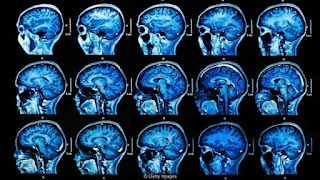Balo’s Disease
Overview
Balo’s disease is a rare demyelinating disorder of the
central nervous system (CNS) in which the myelin (the fatty substance covering
nerve fibers) is damaged. Balo’s disease shares features with other
demyelinating diseases and — while some consider it a distinct disorder — most
MS specialists view it as a rare variant
of multiple sclerosis (MS).
Attacks from Balo's disease can proceed rapidly over weeks
or months, usually without remission (a rapidly progressive course); a
relapsing course (periods of symptoms followed by improvement or disappearance
of symptoms) can also occur, or a person may experience a single attack
(monophasic course).
What causes Balo’s disease?
The cause of Balo’s disease is not known, however, some
studies indicate that autoimmune factors may play a role in its development.
Autoimmune disorders are caused when the body's natural defenses against
"foreign" or invading organisms begin to attack healthy tissue for
unknown reasons resulting in inflammation (swelling).
The cause of the recovery seen in some patients that have or
have not received treatment is also not known.
Who gets Balo’s disease, and when?
Balo's disease appears to be most common in Asians and in
people from the Philippines; it affects males and females with similar
frequency. Balo's disease usually appears in adulthood but childhood cases have
been reported.
How is Balo's disease different from MS?
Balo's disease is sometimes considered a variant of MS
because so many of the symptoms are similar to those seen in MS. In Balo’s
disease, the unusual, concentric ring pattern seen on MRI images and in tissue
specimens is not typically seen in MS.
#CallforPapers for #Alzheimers2018 which will be a great platform to present your research in the field of #Neurodegenerative Diseases.




Comments
Post a Comment